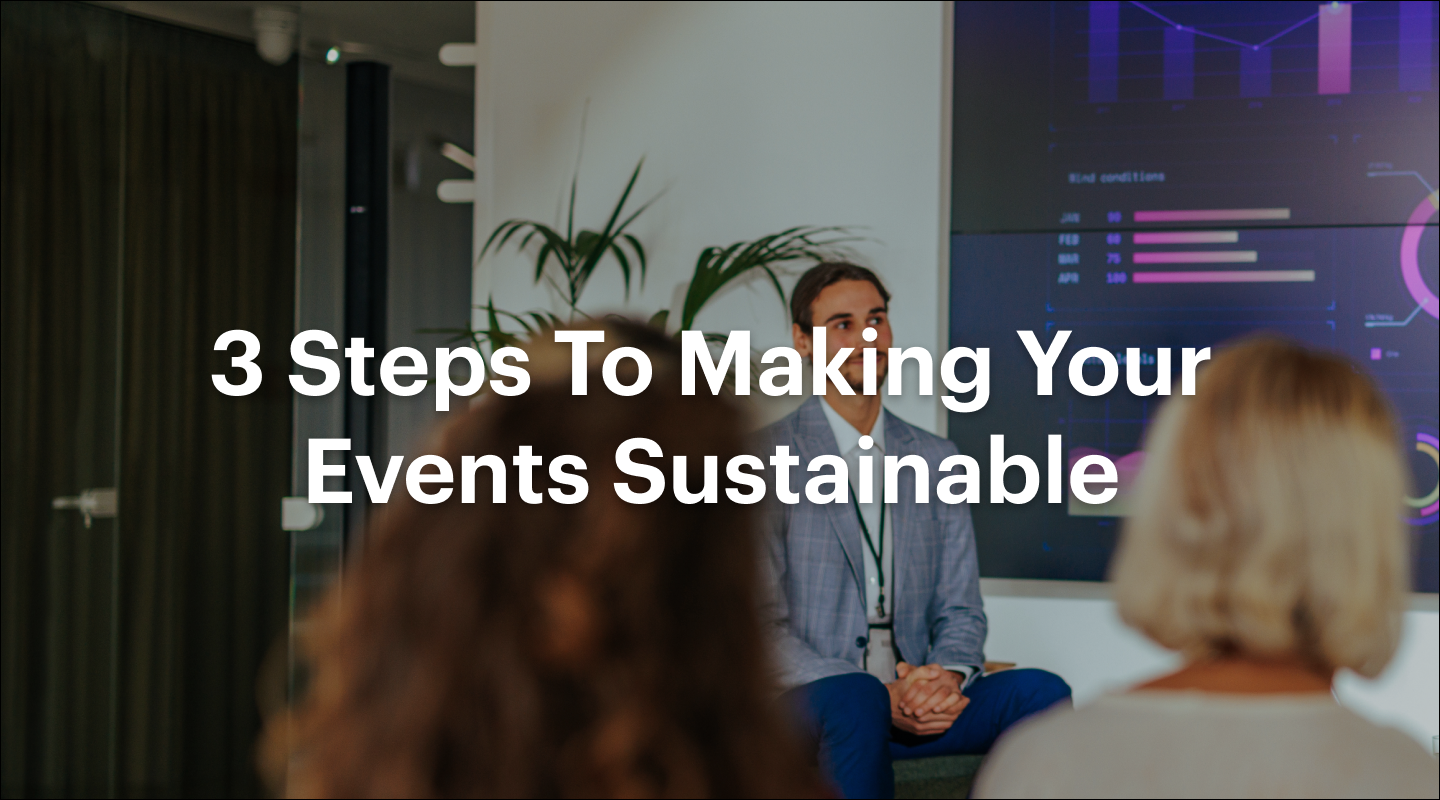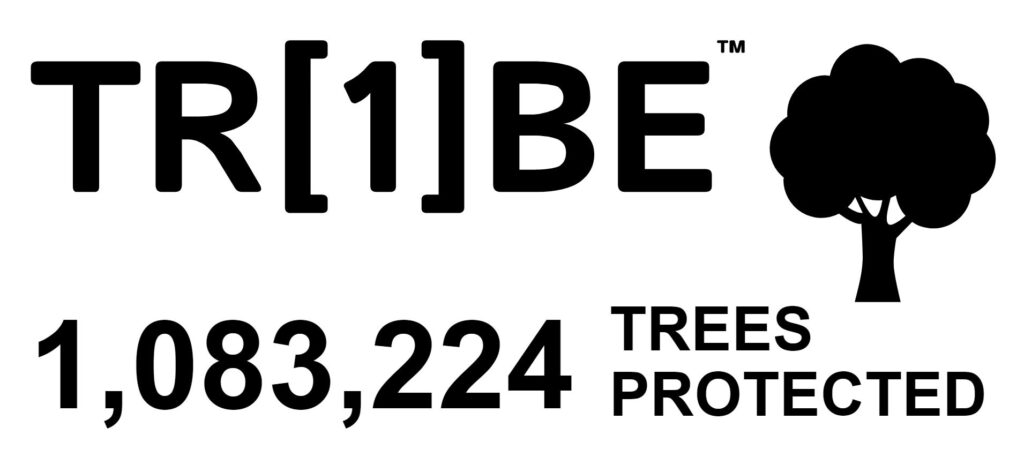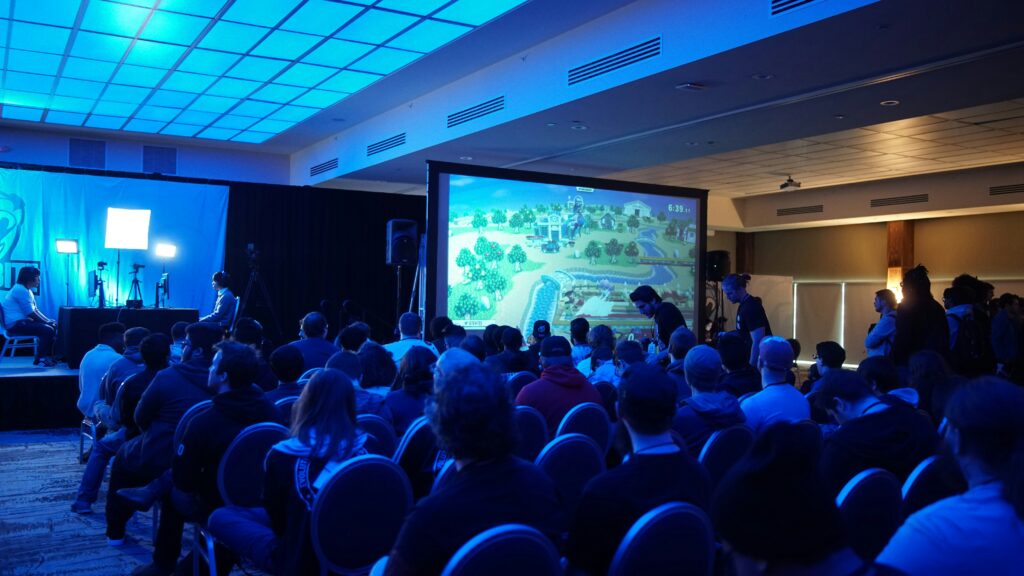
In today’s market where climate change concerns are at the forefront of 76% of Gen-Zer’s minds, businesses across all sectors are racing to align with the latest sustainability goals.
The events industry alone has some serious potential when it comes to attracting the new wave of eco-hungry customers. Currently producing an estimated 1.2 million metric tons of CO2 emissions annually in the UK alone (yikes) making a positive impact on the environment is an easy start for event organisers worldwide. Embracing sustainability not only demonstrates corporate responsibility but also offers numerous benefits, including increased ROI and the ability to attract and retain more attendees.
Our bespoke sustainability checklist is tailor-made to steer event organisers towards greener practices, helping you shrink your event’s carbon footprint and offset those emissions.
It’s no surprise the events industry is notorious for its large carbon footprint, contributing a 10% to global CO2 emissions each year. Transportation, energy usage, waste generation, and venue operations (amongst others) make up a complex network of emissions that release carbon and contribute to greater, and more pressing, climate challenges.
As climate change worsens, it’s crucial for event organisers to acknowledge how their events contribute to environmental degradation and the ways in which they can take proactive steps to mitigate their impact. By adopting sustainable practices within the events industry (such as supporting regenerative practices and offsetting emissions) businesses can significantly reduce their carbon footprint and contribute to shaping a more sustainable future.
Beyond making a few eco-conscious switch-ups (plastic to paper, recycled vs. non-recycled), effectively mitigating your event footprint requires a holistic approach that encompasses three core aspects across your event planning and execution: Calculating, Offsetting, and Marketing.
Calculating your event’s carbon footprint is the first crucial step in understanding the environmental impact of your event. This process involves quantifying the emissions generated throughout the event lifecycle, and can span from transportation to energy consumption, to waste generation, and attendee travel.
To accurately calculate your event’s carbon footprint, take a look at a few carbon calculators or consult with sustainability experts who specialise in making events Net Positive. These tools can help you gather data on various emission sources, calculate carbon equivalents, and determine the carbon footprint of your event.
By calculating your event’s carbon footprint, you gain valuable insights into the specifics behind where your emissions are coming from and the quantity of emissions you are producing. What does this mean for you? This data serves as a foundation for developing well rounded sustainability strategies that can reduce emissions and mitigate the environmental impact of your events effectively. Win win!
Offsetting your event emissions involves compensating for the emissions generated by your event through investing in carbon offset projects that support renewable energy, reforestation, energy efficiency, and other sustainable initiatives.
Carbon offset projects aim to counterbalance greenhouse gas emissions by reducing an equivalent amount of emissions elsewhere or sequestering carbon from the atmosphere – Sound complicated? Don’t worry, here’s everything you need to know:
When selecting carbon offset projects, prioritise projects that have third-party certification from organisations such as Verra and Gold Standard to ensure credibility and transparency. It’s even better to support projects that align with your company’s values and contribute to sustainable development goals. At One Tribe we created our very own impact pages, to help businesses track their offset projects and environmental impact in one place, helping to monitor and oversee all elements of sustainability across their event and/or business.
Offsetting your event’s carbon footprint not only helps mitigate your environmental impact but also demonstrates corporate responsibility and commitment to sustainability. By doing so, you are opening up opportunities to communicate your offsetting efforts transparently to your attendees and stakeholders, showcasing your businesses dedication to environmental stewardship and empowering your audience.
Obvious or not, marketing your event’s sustainability initiatives is crucial in attracting more attendees to your event, as well as raising brand awareness, and amplifying the impact of your sustainability efforts. Here are a few ways you can market you impact more effectively:
By effectively integrating calculating, offsetting, and marketing strategies into your event planning process, you can mitigate your event’s environmental footprint, foster sustainable practices, and inspire positive change within the events industry.



As a whole, sustainable events are integral to achieving climate success and fostering a more environmentally responsible events industry. By acknowledging the carbon footprint of events, investing in sustainability, attracting eco-conscious attendees, and effectively mitigating environmental impact, businesses can align their event practices with sustainability goals while consuming numerous benefits, including increased ROI and enhanced brand reputation. Embracing sustainability in event planning is not only imperative but also a strategic business decision that contributes to a more sustainable future for future generations.
climate action incentives, one tribe climate action, certified climate action, certifying climate action, certification for environmental action, how to improve my business carbon footprint, how to take climate action, incentives to increase sales,
One Tribe is a Climate Action Platform enabling businesses and their customers to make a positive environmental impact.
Eric currently works as an independent consultant at the intersection of nature and climate, focused on catalysing market and non-market solutions to drive the just transition.
He previously was Head of Product at Earthshot Labs, supporting nature conservation and restoration projects across the global south secure project finance. Prior to Earthshot Labs, Eric led nature-based carbon project development for Gorongosa National Park in Mozambique and founded the Carbon Cooperative, a global alliance of leading nature conservation and restoration practitioners exploring carbon finance. After serving in the Peace Corps in Mozambique out of university, he spent much of his 20s working in community-based conservation and ecosystem restoration efforts in Sub-Saharan Africa interspersed with two startup ventures as co-founder and CEO of a mental health tech startup and COO of a sustainable coffee company. Eric has a dual Masters in Environmental Engineering and Environmental Policy from Stanford University where he was a NSF Graduate Research Fellow and a BS in Environmental Engineering from Tufts University.
Alan is a risk management thought-leader, superconnector, and FinTech pioneer. His mission is to enable an Earth Positive economy which includes nature in global accounting systems.
Alan is Founder of Generation Blue, a venture studio dedicated to planetary game changers powered by exponential technologies. Previously, Alan established Natural Capital Markets at Lykke AG, pioneering blockchain based forestry and carbon backed tokens. Alan has over two decades of risk management experience advising global financial institutions, and was a founding member of the RiskMetrics Group, a JPMorgan spin-off. Alan is an investor and advisor to regenerative impact ventures, including TreeBuddy.Earth, Regenativ, and Vlinder Climate.
Lori Whitecalf made history when she became the first woman to be elected Chief of Sweetgrass First Nation in 2011. She served three terms of office from 2011-2017.
Lori took a two-year hiatus from leadership to expand the family ranch and serve as the FSIN Senior Industry Liaison. She was re-elected on November 29. 2019 and again on November 30, 2021, as Chief of Sweetgrass. Chief Whitecalf practises a traditional lifestyle of hunting, fishing and gathering. She currently sits on the following boards: Saskatchewan Indian Institute of Technology, FSIN Lands and Resource Commission, Battle River Treaty 6 Health Centre and Battleford Agency Tribal Chiefs Executive Council, FSIN Women’s Commission.
Tina is the Chief Business Officer for MLTC Industrial Investments, the Economic Development arm of the Meadow Lake Tribal Council. She has a diverse background of experience. Having spent 15 years as a municipal Chief Operating Officer, 20 years involved in Saskatchewan’s Health Authority Board Keewatin Yatthe and 9 years with Northern Lights Board of Education.
She continues as a Board Member with Beaver River Community Futures supporting small business development in her home region. Tina brings a wealth of experience in a variety of fields and many connections to the Indigenous communities of Northern Saskatchewan. In addition Tina holds a BA Advanced from the U of S, a Certificate in Local Government Authority from the U of R and is certified as a Professional Economic Developer for Saskatchewan and a certified Technician Aboriginal Economic Developer (TAED).
Tootoosis’ career spans 40+ years in HRM, political leadership, and Indigenous economic development, as a dedicated bridge builder and advocate for Indigenous causes.
As a key member of the Saskatoon Regional Economic Development Authority (SREDA) team since 2021, he develops strategies for the Truth and Reconciliation Commission final report and Call to Action #92.
He is a graduate of the First Nations University of Canada and a certified Professional Aboriginal Economic Developer. Spearheading various community initiatives while serving as a Chair of the SIEDN while directing ILDII and WIBF. Founder of MGT Consulting Tootoosis is based in Saskatoon, Treaty Six Territory.
Cy Standing (Wakanya Najin in Dakota) has a long and distinguished career including serving overseas as an Electronics Technician in the Royal Canadian Air Force, former Chief of Wahpeton Dakota Nation, former Vice Chief of the Federation of Saskatchewan Indigenous Nations (FSIN), past Executive Director of Community Development Branch of the Department of Northern Saskatchewan as well as an Order in Council appointment to the Federal Parole Board.
Mr. Standing has served as a Director on many Profit and Non-Profit Corporate Boards, including serving as a Director for Affinity Credit Union with assets of over six billion dollars as well as IMI Brokerage and Wanuskewin and is currently a member of the One Tribe Indigenous Carbon Board.